
Honda City First Drive 2023 | Do you love sedans too?
- Mar 13, 2023
- Views : 6725


The 2023 Hyundai Verna arrives with a two-pronged purpose: Make up for what was lacking in its predecessor and deliver a more thorough “baby-Elantra” experience.
Sight For Sore Eyes?
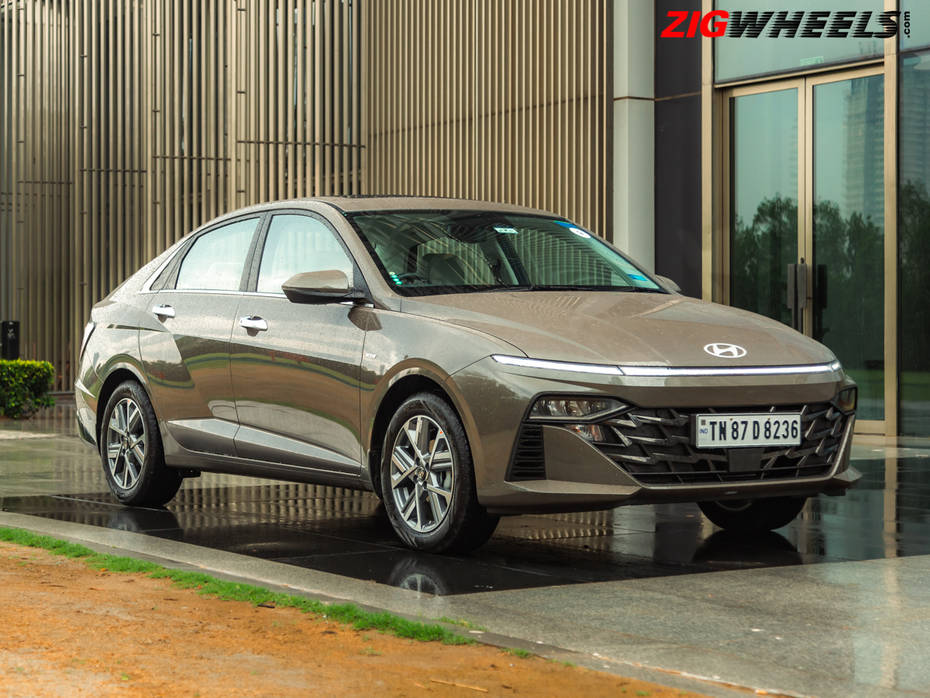
Let’s address the biggest point of controversy with this new Verna. Blown away as people were by the design sketches, the actual car has opinions split on how it looks. Truth be told, the car is much better-looking than it is photogenic. The fundamental hiccup is how many cuts, creases, louvres and patterns have found their way onto the different panels, resulting in a design that is distinct but not subtle. Then again, the Creta invited identically polarising comments when it debuted in 2020, so maybe opinion-splitting design is a net positive?
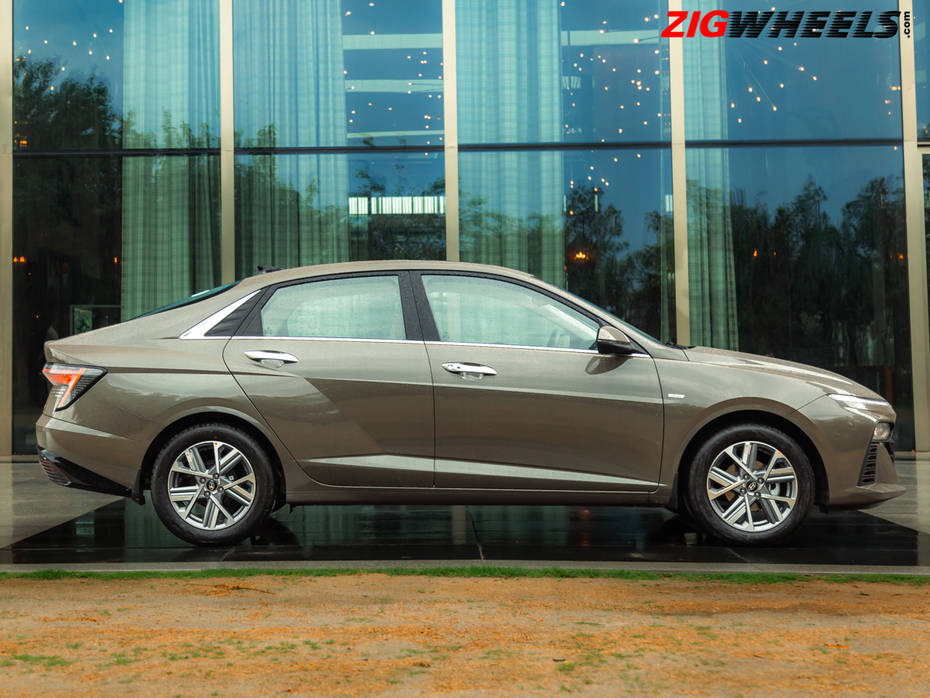
Importantly, the new Verna is a larger car. In a similar vein as compatriots Volkswagen Virtus and Skoda Slavia, the Verna has upsized the segment itself and is currently among the widest and longest. Even the sedan’s wheelbase has grown to 2,670mm (+70mm) but that increase sounds bigger on paper than it is in person. Visual or functional, any impact here is a function of how the car has been reimagined from scratch.
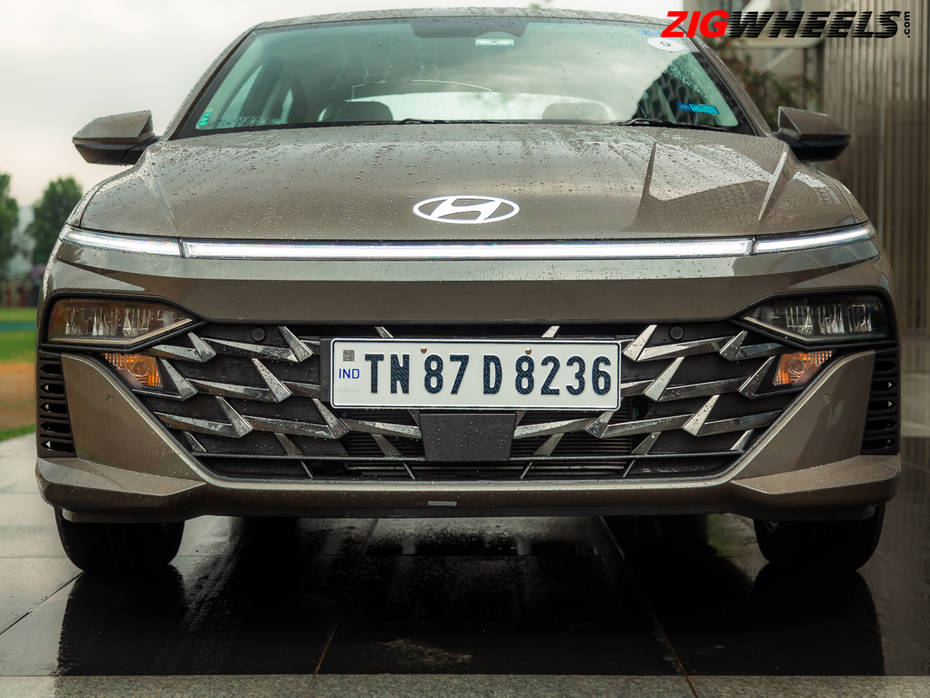
Up front, the design is derived from the new generation Hyundai Sonata, that has just been revealed globally, with the biggest talking point being the Cyclops-style single-piece LED strip above the bumper-integrated LED headlights. The side profile is where there’s an evident shift in design, with the car going from its slender front end to muscly, Tucson-like haunches as you move to the rear.
FYI
Get the base 1.5-litre petrol engine, and the 16-inch alloy wheels are silver.
Move up to the turbo and the same wheels get painted black while the front brake callipers get finished in a shade of red.
Pick the turbo-DCT, and you’ll get rear wheel disc brakes as well.
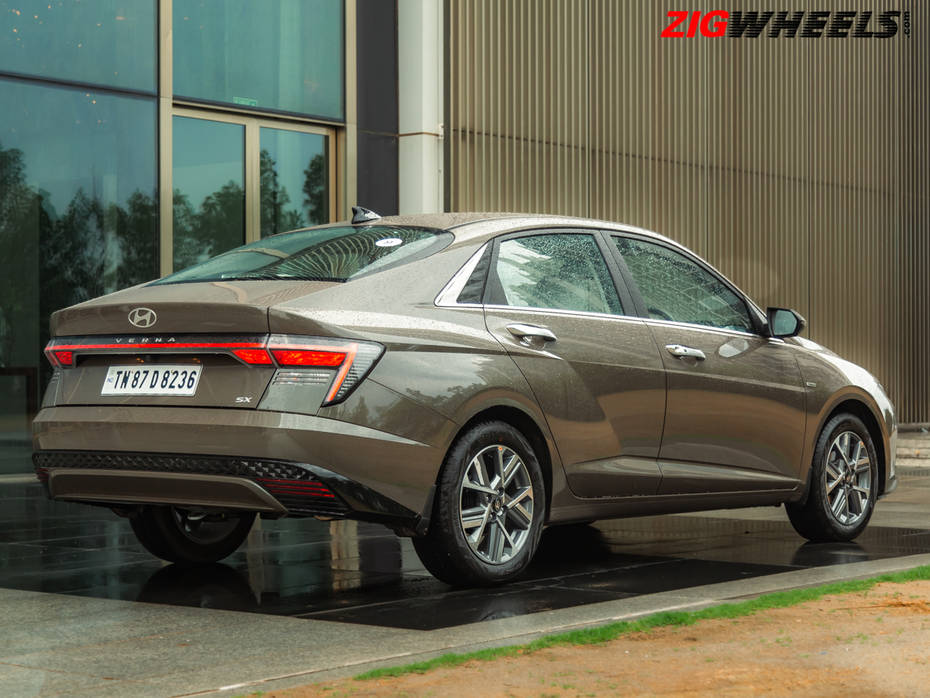
The heaviest dose of styling, without a doubt, is at the rear. All the body panel-carving is more apparent in brighter colour options like red, silver or white. The light cluster includes a body-wide LED strip, a different strip of light pins for the brakes and a separate set of strips underneath the tail lamp for the indicators and reverse lamps.
F Is For Family
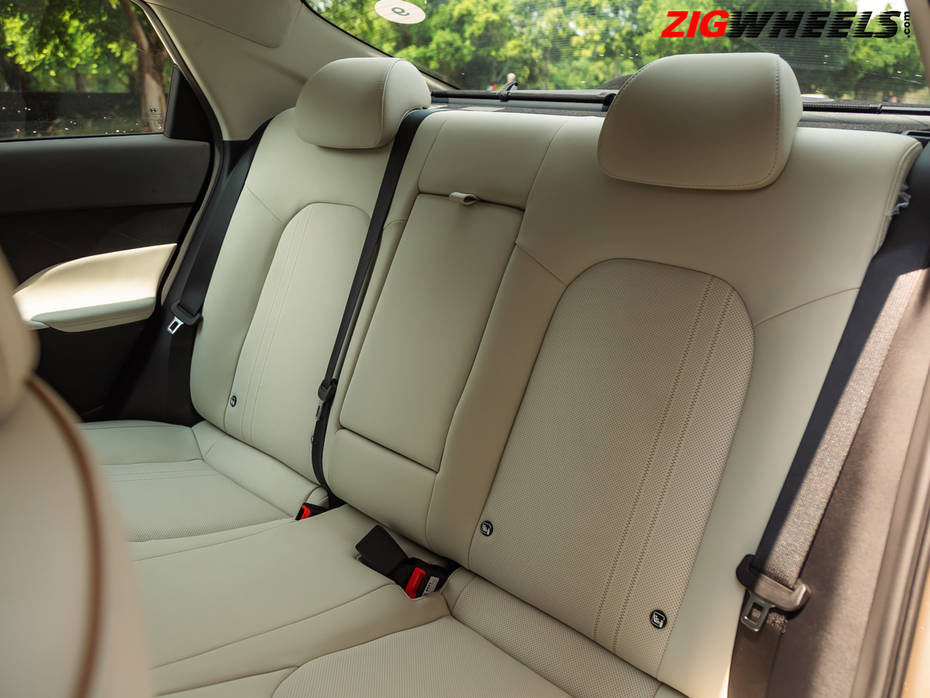
To make a long story short, the Verna’s backseat has gone from being the least impressive in the segment to one of the best. Even passengers who are over six feet tall have good seat comfort, knee room and headroom. Those who have a hefty build will like the seat contouring as well.
While the Virtus and Slavia have more strongly defined lateral support edges and work a little better as dedicated four-seaters, the Verna’s seats are more accommodating for large frames. The Verna also does a better job of seating three at the rear though it is still a slight squeeze for adults. Also, while you do get three point seatbelts for everyone, there is no middle headrest.

Rear Seat Amenities
|
2 x USB Type-C charge ports |
AC vents with phone slot underneath |
|
Rear Sunshade |
Armrest with cupholders |
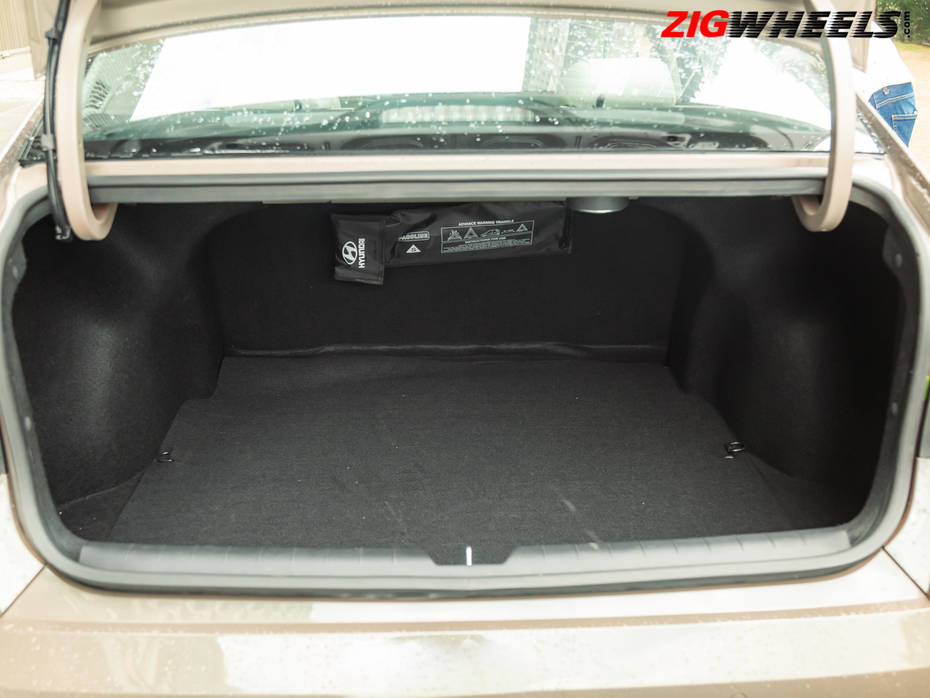
The 528-litre boot is plenty accommodating for airport runs/weekend family trips with a wide loading mouth for easier access.
Command Centre
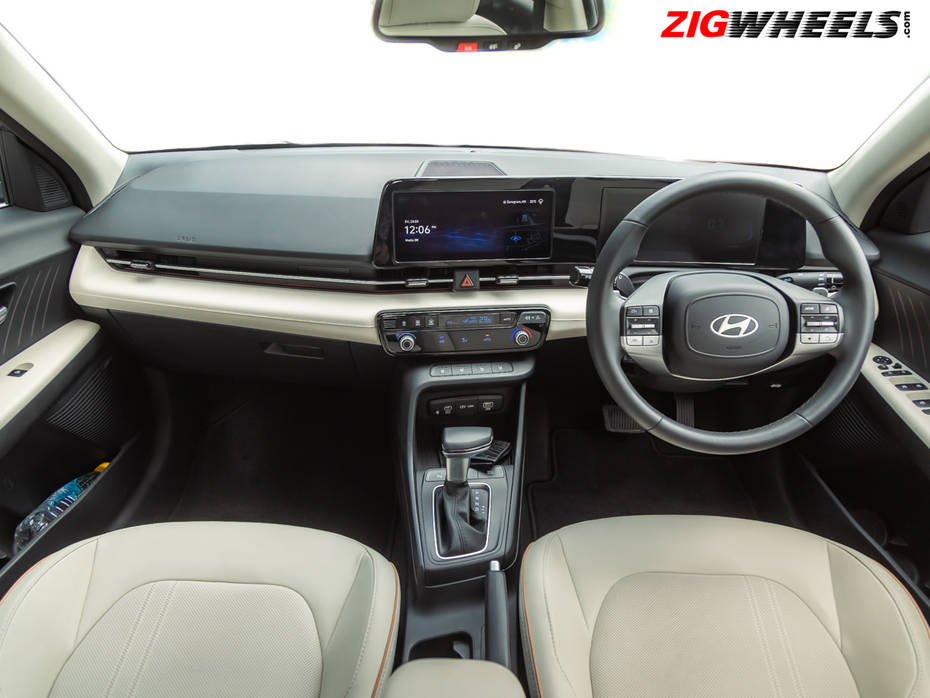
The 2023 Hyundai Verna’s dashboard looks the most futuristic, but the Honda City still has a slight edge when it comes to how premium the cabin is to touch and feel. While the cabin plastics feel slightly better than the Virtus or Slavia’s, Hyundai has also been more generous with the use of soft-touch/leatherette materials on the interior trim.
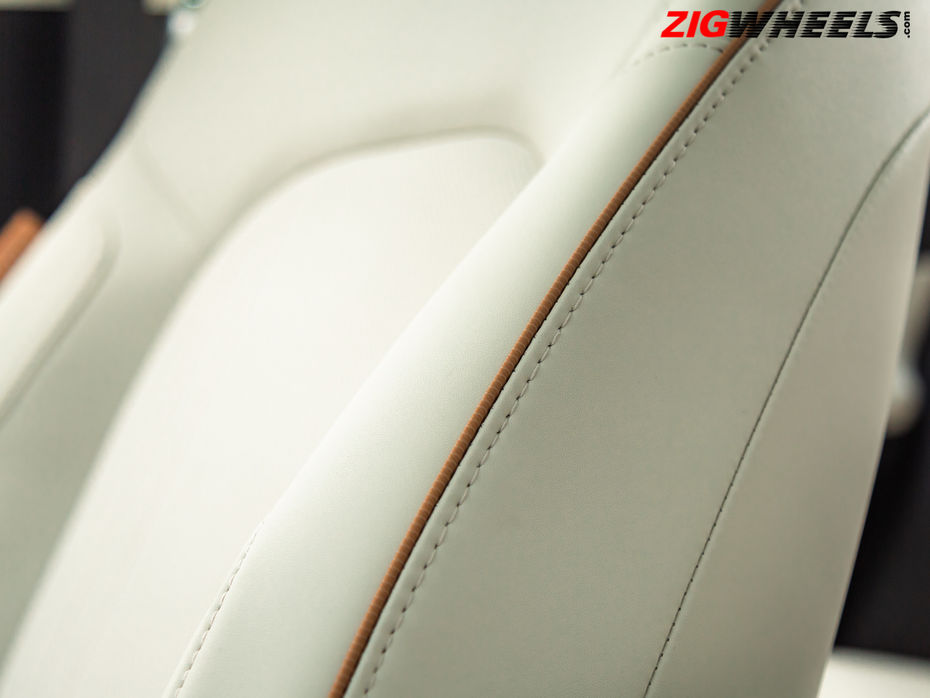
There’s also more attention to detail when it comes to elements like the leatherette seat upholstery or damped action of the AC vents that make this cabin feel richer.
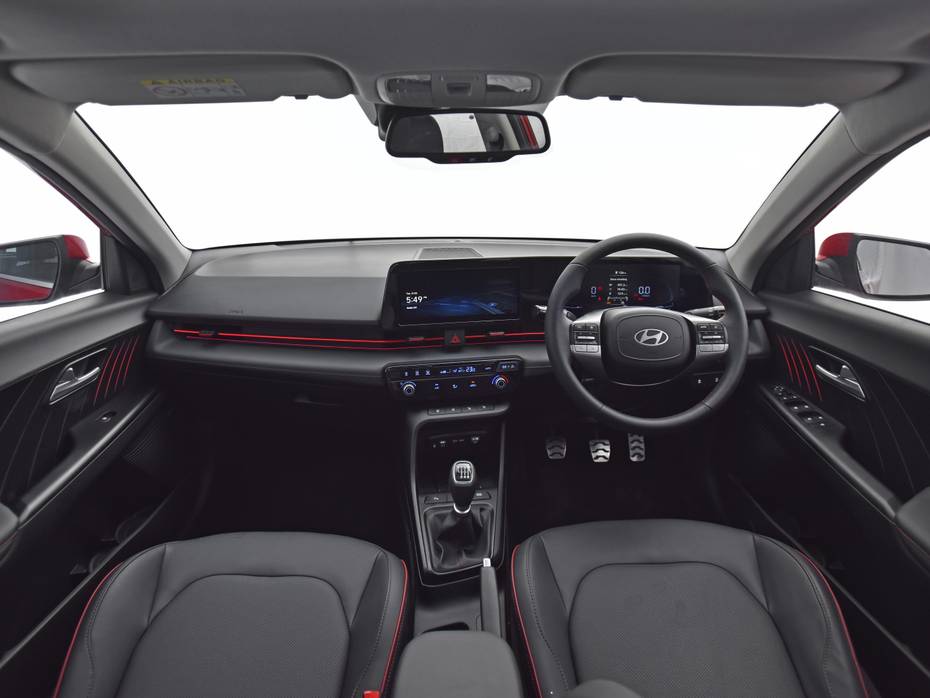
FYI
As standard, the Verna gets a beige-black interior with the SX (O) getting brown contrast stitching on its leatherette-upholstery
The turbo versions get a black interior with red contrast finishers
Here’s a run-through of the features and their execution:

10.25-inch touchscreen: Smooth and intuitive to use with the screen offering good resolution as well. Android Auto and Apple CarPlay are supported but not wirelessly, even though there is a wireless phone charger. Additionally, while there are type-C and type-A ports up front, only the latter can be used to engage the aforementioned phone projection features.

BOSE 8-speaker music system: Impressive sound quality. The presence of a central speaker on the dash and subwoofer at the rear helps the system offer a good experience for both, front and rear occupants whereas most cars in the segment are heavily front row-biased.

Digital instrument cluster: Similar interface as the Hyundai Venue’s with a TFT MID in between two digital displays. The drive modes change the theme around the cluster but it isn’t as interactive as the setup you’d get in the Alcazar, which would feel better in this car.

Heated and ventilated seats: Work effectively with the seat ventilation being surprisingly quiet!

Powered driver’s seat: Electrically-adjusts the seat base’s fore-aft movement as well as the backrest angle but the seat height is adjusted manually. An annoying cost-cut!

64-colour ambient lighting: Wide range of colours aside, the ambient light is integrated tastefully into the AC vents, across the dashboard and the front door pads.
FYI
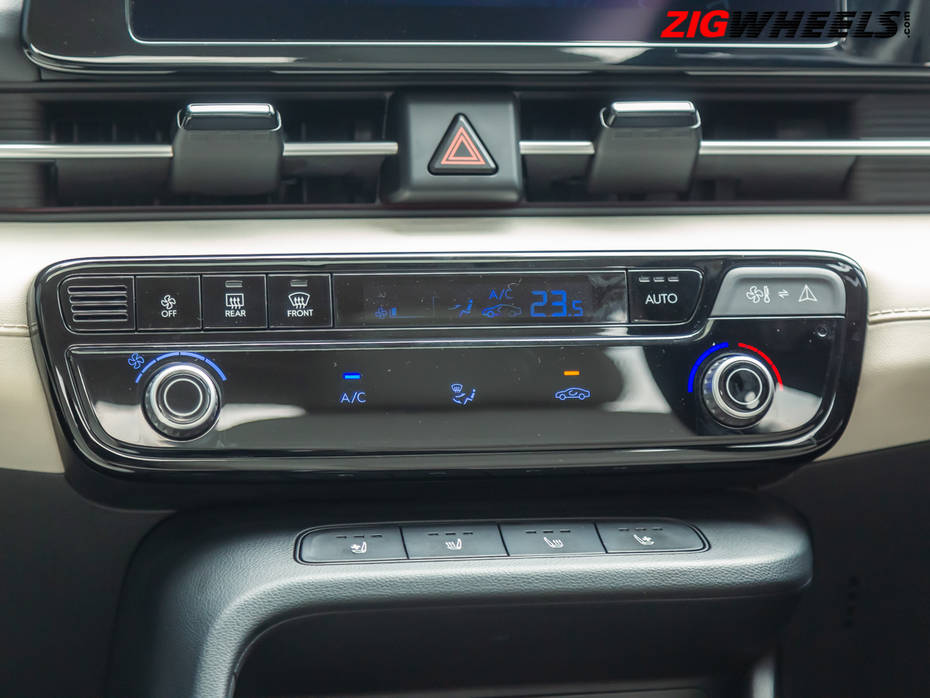
The AC console has a switchable display that doubles up as the media controls at the touch of a button. For example, the temperature and blower speed knobs will switch to the tuner and volume control knobs.
Other Features
|
Sunroof |
Tilt/telescopic Steering |
Auto Headlamps (no auto wipers) |
|
Auto-Dimming IRVM |
BlueLink Connected Car Tech |
Home-To-Car Connectivity Via Alexa or Google Assistant |
|
Highline Tyre Pressure Monitoring |
Electronic Parking Brake (DCT only) |
All-round 3-point Seatbelts |
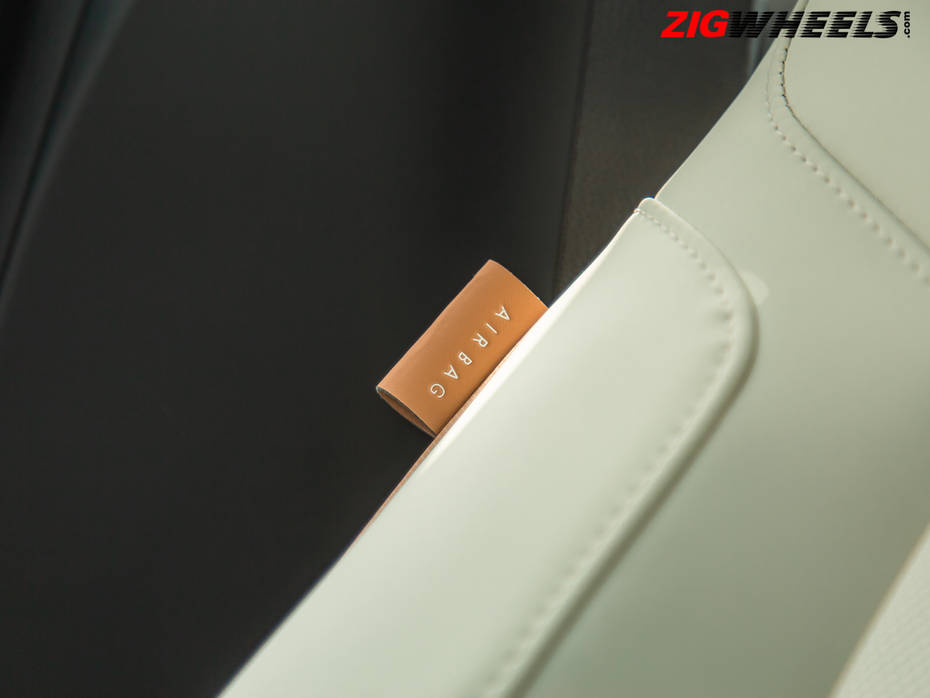
Six airbags, ABS with EBD, ISOFIX and rear parking sensors come as standard safety features with the 2023 Verna. Moving up the range adds stability control, hill-hold, front parking sensors and a rear camera with dynamic guidelines. No surround-view camera, but the major safety upgrade is the suite of driver-assistance systems
India-Friendly ADAS (radar+camera-based front | radar-based rear)
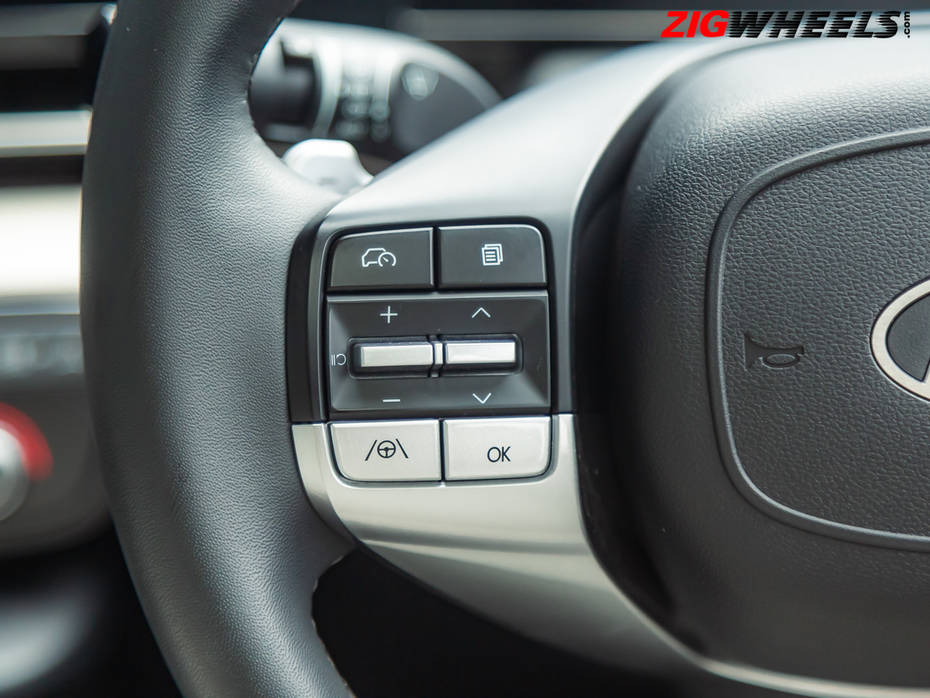
Adaptive Cruise Control: Offered only with the turbo-DCT, the system maintains a 2.5-3 car gap at its lowest setting. If traffic cuts in between that gap, the system paces down gradually and in a predictable manner, unlike many ADAS-equipped vehicles that tend to panic brake or drop speed in a jerky fashion.
Forward Collision Avoidance: The speed-sensitivity is tuned very well for Indian conditions. Even with half a car distance to a vehicle ahead, the system knows when to warn the driver and when to intervene with auto-braking. The distinction helps reduce the risk of getting rear-ended that some ADAS setups suffer from in Indian road applications.
Lane-keep Assist: A very well-executed system that keeps the car dead centred even at 80-100kmph through curves in the road. Corrective inputs from the system feel natural and can make highway driving less taxing. In the event that you need to break lane without the opportunity to indicate (say, to avoid large puddles, unmarked stopped vehicles or debris that unfortunately garnish our highways often), the steering does try to push you back into the lane but not so aggressively that you have to fight it into a lane-switch.
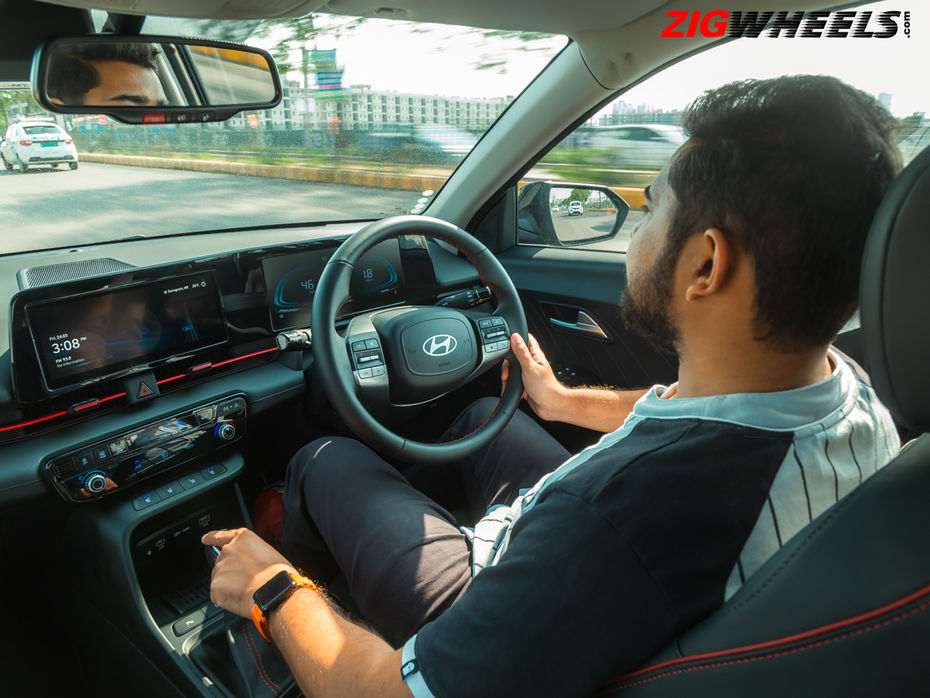
Other features like rear cross-traffic alert, blind spot collision warning and safe exit warning also work organically and will make a first-time ADAS-adopter feel comfortable.
To Turbo Or Not To Turbo?
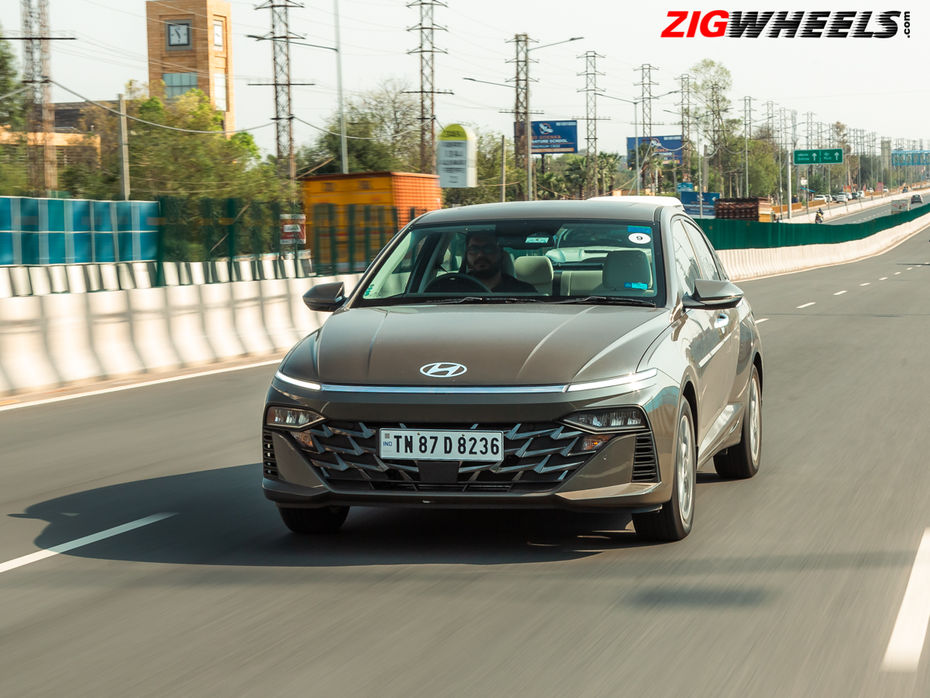
The naturally-aspirated 1.5-litre petrol’s biggest draw is smoothness. The engine delivers its performance in a very progressive manner and with the CVT, the pace-up is at its smoothest. For commuting in city traffic, it is the easier to manage and calmer of the two engines.
|
Technical Specifications |
1.5-litre 4-cylinder petrol |
1.5-litre 4-cylinder turbo-petrol |
|
Power |
115PS |
160PS |
|
Torque |
144Nm |
253Nm |
|
Transmission |
6-speed manual | CVT |
6-speed manual | 7-speed dual-clutch automatic |
|
ARAI-Rated Fuel Efficiency |
18.6kmpl | 19.6kmpl |
20kmpl | 20.6kmpl |
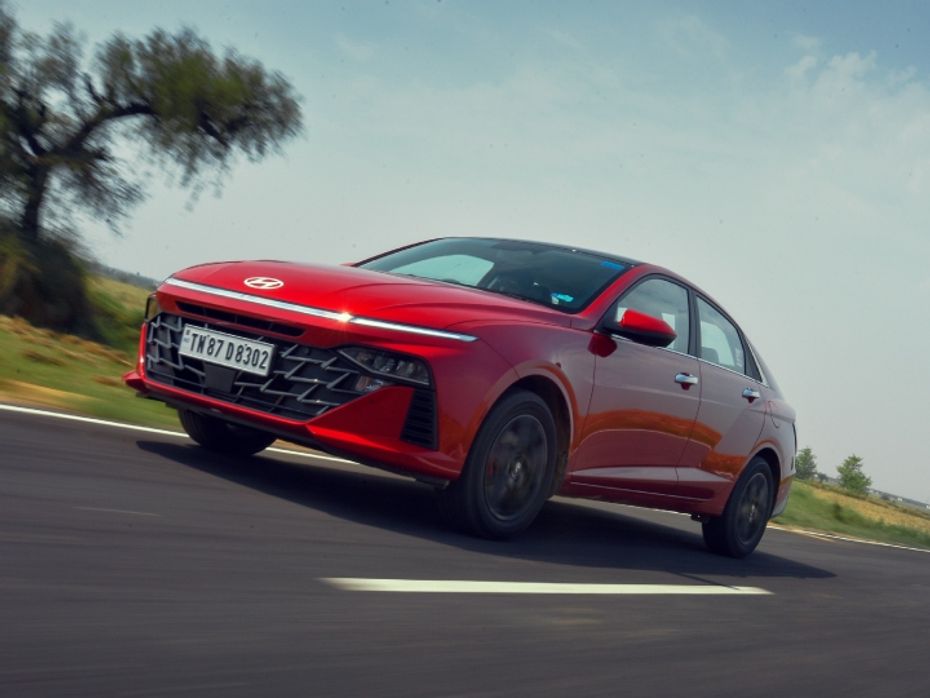
That said, the 1.5-litre turbo is plenty polished in itself. While there is some initial lag, it doesn’t feel sluggish at low speeds nor does it feel jerky for daily drives. Both the six-speed manual and seven-speed dual-clutch automatic feel commuter-friendly but it is the turbo-DCT we’d tilt towards. Not only is the transmission responsive, it’s also super smooth through upshifts and manages shift shock well even with the sharp downshifts.
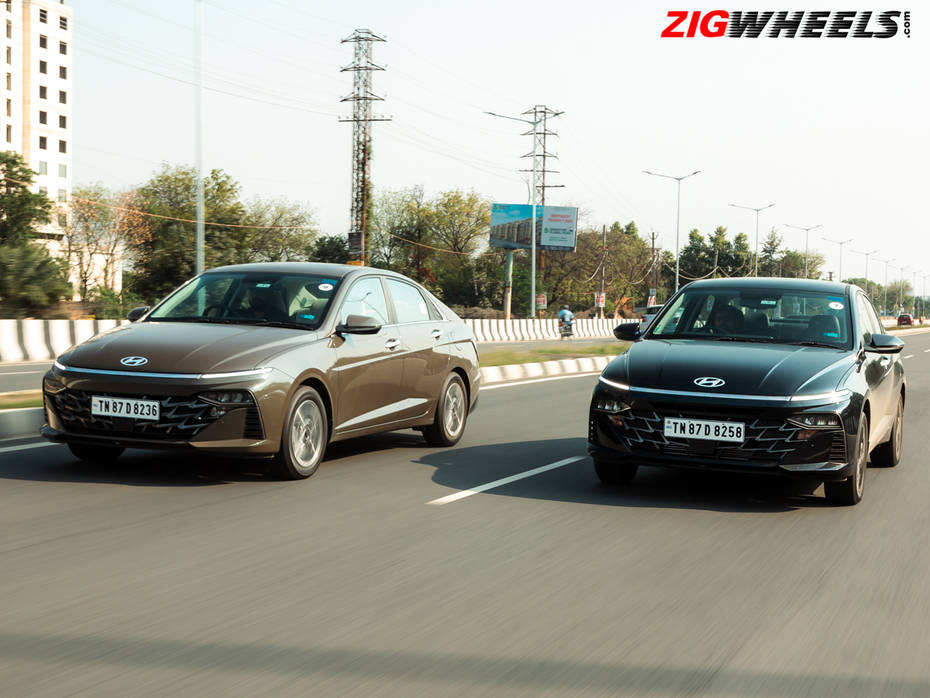
The turbo’s primary selling-point is its highway performance. The N/A petrol has enough grunt to sit at 100-120kmph at ease but it does get vocal during overtakes, even from 40-60kmph. In comparison, the turbo offers a punchier mid-range and makes filtering through highway traffic an easier affair.
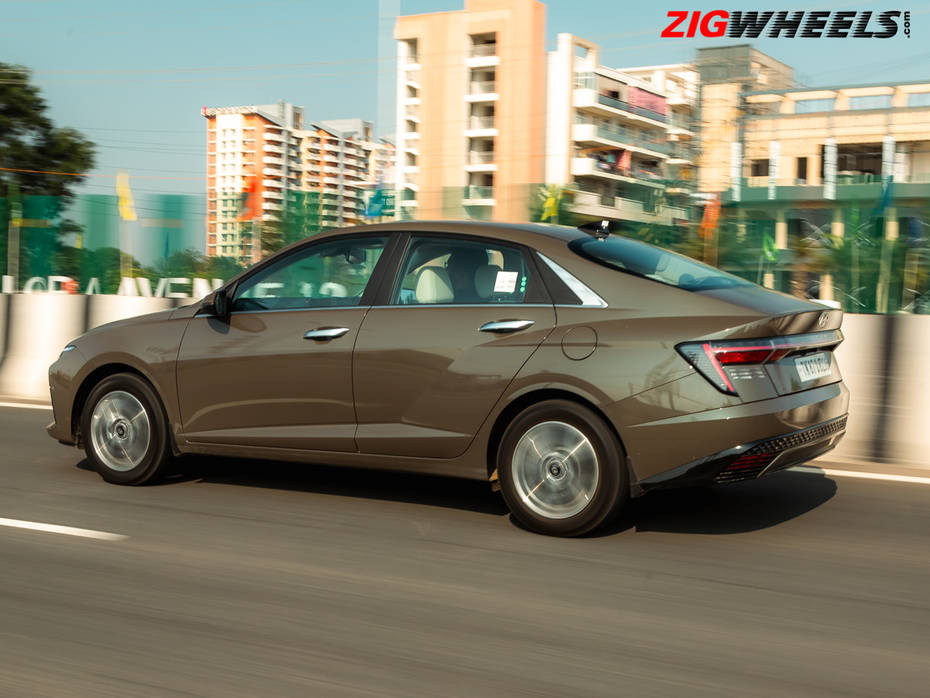
The SX (O) turbo-DCT is just over Rs 1 lakh pricier than the SX (O) IVT. That is a small leap to make for the added performance, the addition of rear disc brakes and adaptive cruise control as well. Not to mention, it also gets you a sportier looking car on the inside and out, if that’s what you’d prefer. That said, while ARAI’s test cycle puts the turbo’s fuel-efficiency above the N/A petrol’s, real world tests are likely to bear the opposite result. Something we will verify during our road test schedule.
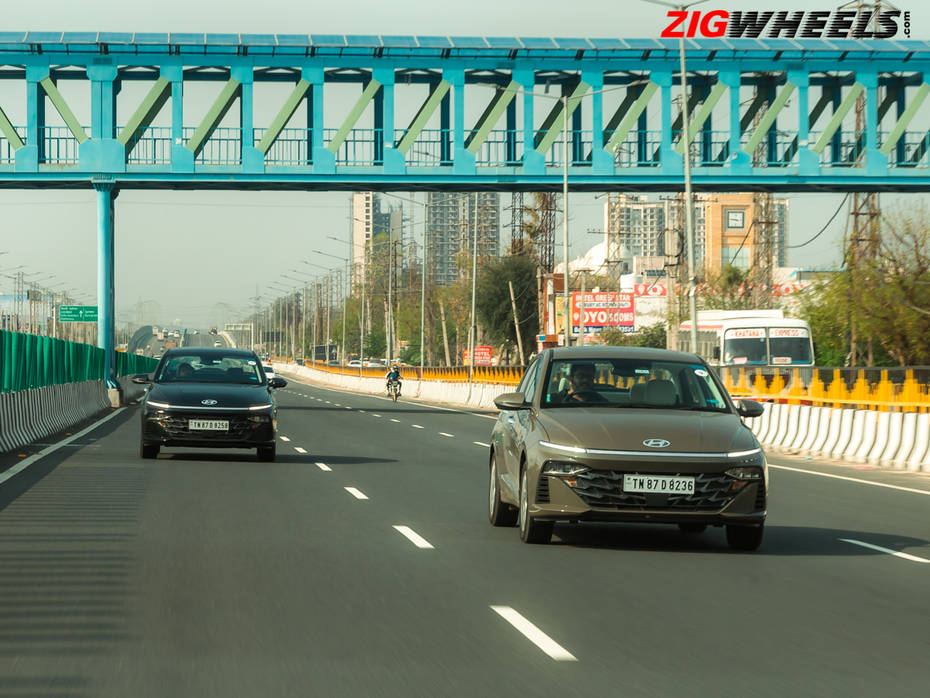
As for ride comfort, our drive through Gurugram was almost entirely on well-paved roads where the Verna felt plenty comfortable. Sharper bumps will be felt in the cabin but it’s not too soft or bouncy on the recovery. Similarly, with three people on board, it felt comfortable at 100-120kmph as well.
Bottomline
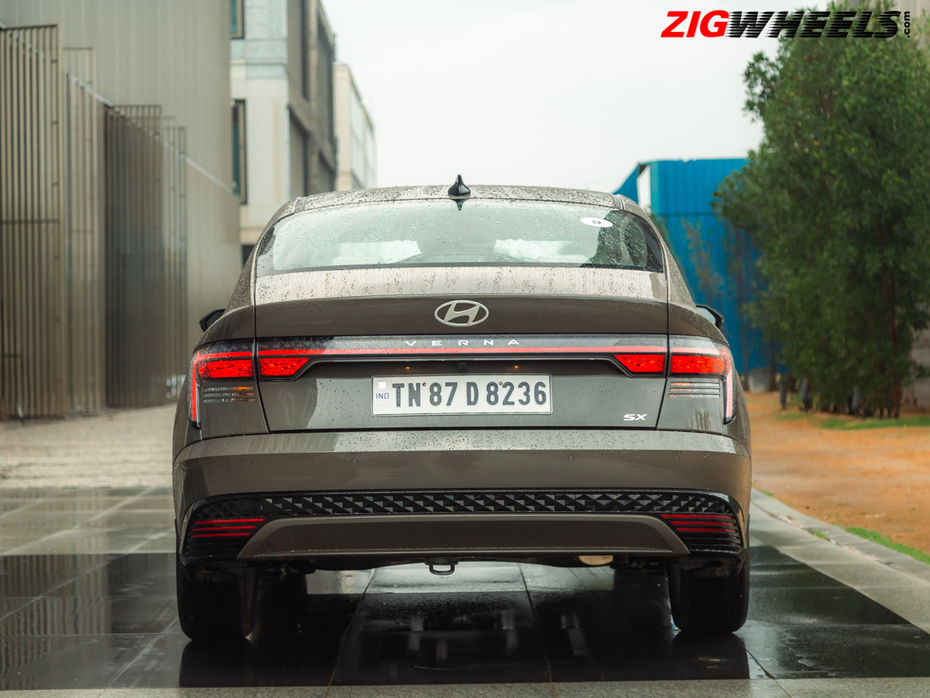
Hyundai may market this car with terms like “ferocious” or “futuristic” but the one true achievement of this sedan and the word that describes it best is “balanced”. The new Verna has plentiful space and practicality for a whole family, the features package is rich with the right focus on usability, the engines offer the right blend of performance and convenience and even a halo bit of tech like ADAS has been calibrated to make you adapt to it, easily/happily so.
The one point of polarisation would be the looks, but that’s simply a matter of personal preference. Otherwise, the new Verna is simply a car we’d happily recommend buying.


Honda City First Drive 2023 | Do you love sedans too?

2024 Hyundai Creta Facelift vs Rivals: Which Compact SUV Shines On...

Hyundai Creta 2024 Review: First Drive

Honda City vs Skoda Slavia vs Volkswagen Virtus: Triple Threat Sedans...

Volkswagen Virtus First Drive Review: Does The City Need To Sweat?

Hyundai Verna vs Honda City vs Skoda Slavia vs Volkswagen Virtus:...
 Honda City
Honda City
 Hyundai Creta
Hyundai Creta
 Skoda Slavia
Skoda Slavia
 Volkswagen Virtus
Volkswagen Virtus
India's largest automotive community
 Bharat Mobility Global Expo 2025 Day 1 Wrap Up: All You Need To Know
Bharat Mobility Global Expo 2025 Day 1 Wrap Up: All You Need To Know
 Lexus LF-ZC Concept Makes India Debut At Bharat Mobility Global Expo 2025
Lexus LF-ZC Concept Makes India Debut At Bharat Mobility Global Expo 2025
 A Japanese Micro Off-roader? Meet The Lexus ROV Concept On Showcase At The Auto Expo 2025
A Japanese Micro Off-roader? Meet The Lexus ROV Concept On Showcase At The Auto Expo 2025
 Skoda Introduces Elroq SUV To India At The Bharat Mobility Global Expo 2025
Skoda Introduces Elroq SUV To India At The Bharat Mobility Global Expo 2025
 Hyundai Creta
Rs. 11.10 Lakh
Hyundai Creta
Rs. 11.10 Lakh
 Hyundai Venue
Rs. 7.94 Lakh
Hyundai Venue
Rs. 7.94 Lakh
 Hyundai i20
Rs. 7.04 Lakh
Hyundai i20
Rs. 7.04 Lakh
 Hyundai Exter
Rs. 5.99 Lakh
Hyundai Exter
Rs. 5.99 Lakh
 Hyundai Aura
Rs. 6.54 Lakh
Hyundai Aura
Rs. 6.54 Lakh
 Maruti Dzire
Rs. 6.79 Lakh
Maruti Dzire
Rs. 6.79 Lakh
 Hyundai Verna
Rs. 11.07 Lakh
Hyundai Verna
Rs. 11.07 Lakh
 Honda Amaze
Rs. 7.99 Lakh
Honda Amaze
Rs. 7.99 Lakh
 Toyota Camry
Rs. 48.00 Lakh
Toyota Camry
Rs. 48.00 Lakh
 Hyundai Aura
Rs. 6.54 Lakh
Hyundai Aura
Rs. 6.54 Lakh